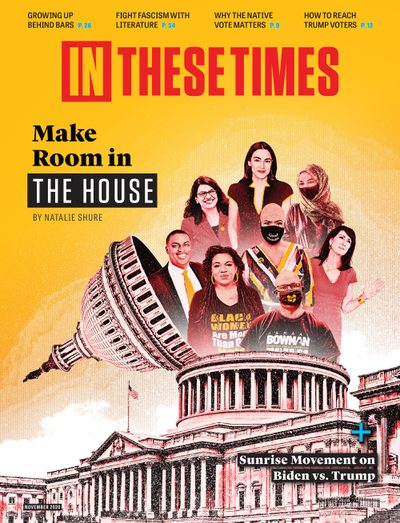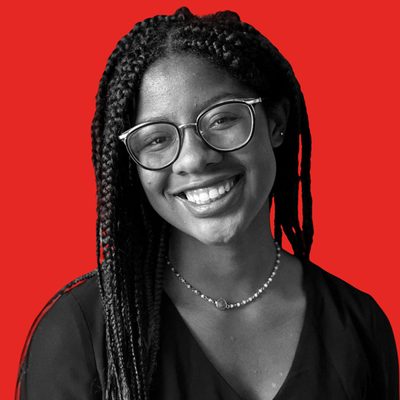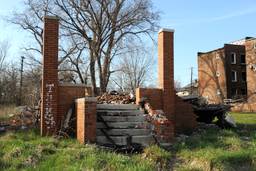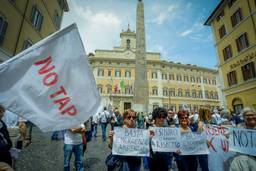The Climate Movement’s Reckoning with Black Lives Matter
For far too long, the climate movement has ignored the needs of the people most impacted by the climate crisis. That’s changing.
Camille Williams
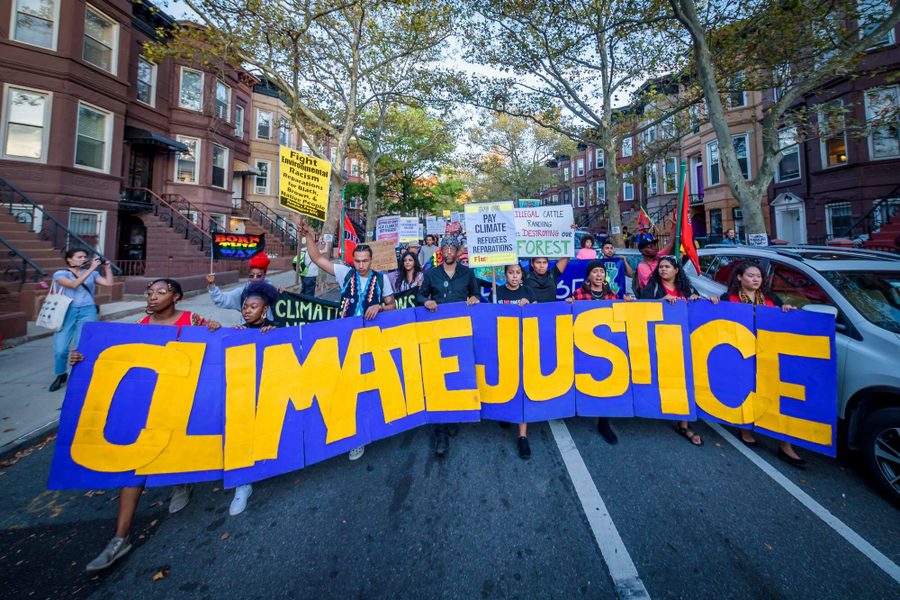
BROOKLYN, N.Y. — Environmental justice has never been separate from racial justice, according to Elizabeth Yeampierre, co-chair of the national Climate Justice Alliance and executive director of the intergenerational, woman-of-color-led climate organization, UPROSE. Had she not been sick with Covid-19, she would have been in the streets with the thousands protesting the killing of George Floyd.
“We’ve been fighting for the right to breathe [clean air],” Yeampierre says. “So the fact that cops are literally [taking our breath away] is not surprising.”
As recently as 2019, groups at the intersection of policing and climate change — like UPROSE — were in the minority among environmental activists. But following mass demonstrations against racial injustice — and a pandemic that has disproportionately affected Black and Latino communities — the climate movement is broadening its political horizons and finally reckoning with the reality that some of its most prominent organizations have disregarded the vulnerable groups for whom they claim to speak.
Since UPROSE launched the Sunset Park Climate Justice Center in 2012 to promote community resilience and climate adaptation, Yeampierre says white-led climate groups have hindered the justice-centered solutions UPROSE has worked toward. So when a wave of white-led environmental groups like the Sierra Club, Natural Resources Defense Council, and 350.org proclaimed solidarity with Black Lives Matter, Yeampierre was circumspect.
“To be perfectly honest, it felt a bit opportunistic,” she says. “[These same organizations have ignored] the myriad challenges faced by frontline communities. [And] they know what those challenges are because we’ve told them.”
As climate change accelerates, Yeampierre fears low-income neighborhoods like Sunset Park will be hit “first and worst,” with gentrification and disinvestment in public infrastructure, threatening their ability to mitigate the effects of climate change — a fate the borough’s whiter, more affluent residents will likely avoid.
Prior to this summer, 350Brooklyn, an independent chapter of the international 350.org network to end the use of fossil fuels, had worked on projects that aid communities of color, including advocacy for the closure of Rikers Island (New York City’s largest prison), rezoning efforts alongside the Gowanus Neighborhood Coalition for Justice, and standing against the construction of the Williams Pipeline (which would carry fracking gas from Pennsylvania to the lower New York Harbor). But as an organization formed by and predominantly composed of white people, 350Brooklyn’s staff admits to blind spots when it comes to addressing structural racism.
“The horrifying deaths of George Floyd and Ahmaud Arbery and Breonna Taylor just brought home how much needs to be done,” says Mimi Bluestone, 350Brooklyn co-founder. “We [realized] we needed to do more than make a statement; we needed to begin an internal inquiry into what more should we be doing.”
Tamara Toles O’Laughlin, North America regional director of 350.org, says the organization redirected its resources toward engaging its (mainly white, U.S.) membership with the Black Lives Matter movement after George Floyd’s death. The group raised more than $100,000 in three days for bail funds, published a pledge to stand for Black lives and disseminated a resource guide to “dismantle white supremacy.”
O’Laughlin credits 350.org’s swift response to the people of color in its key leadership positions, the absence of which may have held its local chapters (and other climate groups) back.
“I think it’s taken generations of Black people coming into that space,” O’Laughlin says. “Indigenous people pushing for sovereignty, and asking to be brought to the place where decisions are made — not just [to be] window dressing.”
The group is virtually all-white and may have (unintentionally) deterred people of color from joining. Although Georgi Page, one of the facilitators of 350Brooklyn’s racial equity inquiry, acknowledges she was one of few Black people on staff when she joined the organization’s steering committee in 2019, she says her voice has been heard.
Not long after the George Floyd protests, 350Brooklyn settled on the central question of its internal inquiry: “How might we be more inclusive and prioritize the needs of Brooklyn’s POC communities?” Designing a workshop for members addressing this question, and asking local justice organizations about what 350Brooklyn can do to support them, are both part of the group’s effort to become more justice-oriented. “None of these issues can be dealt with unless we are united and are working across issues and across communities,” Bluestone says.
Yeampierre believes that, after years of pleading, these movements are aligning at last. For example, multiple members of the Climate Justice Alliance are now collaborating with the Movement for Black Lives. And in July, the Movement for Black Lives created its model Breathe Act, which calls for police department funds to be redirected to combat environmental racism, among other measures.
“The fact that we’re at that table,” Yeampierre says, “and that we’re sharing literally a life’s work of communities all over the country … that’s really powerful.”
Camille Williams was an editorial intern at In These Times and is a journalism student at Northwestern University.
